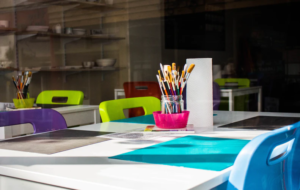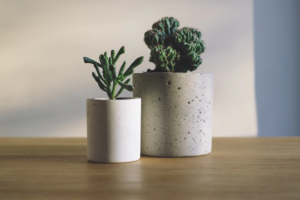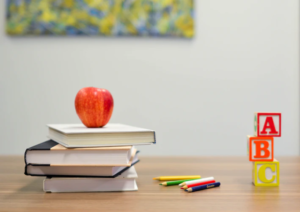
Classrooms are supposed to be an inviting and stimulating spaces for children. The decor of a classroom, whether it’s done by the teacher or parent volunteers, is designed to make students feel comfortable in the environment they spend most of their day in. It is important to have a comfortable classroom for students because studying can be difficult, and sometimes students may even need to pay for assignment help. Yet, there are so many different ways to go about classroom decoration- from furniture pieces that match your theme to creative displays. Here are some classroom decorating ideas from the experts.
Make the Space Inviting and Open
There are tricks to making the classroom open and warm. One way to create a space that is inviting and warm, as well as comfortable for students, is by using large school furniture such as couches or chairs. Other tips and tricks include:
- Adding pillows or throws can make the student feel more at home when they are in the classroom, which encourages creativity and thinking outside the box.
- Large furniture such as couches and chairs helps with creating an environment where students can move around comfortably. Consider using modular furniture that can easily be rearranged depending on what types of activities are taking place during each lesson (e.g., math class, reading class, science lab). This will help keep the room flexible. It might seem like an easy update, but rearranging desks will give off a different vibe than before. The flow of traffic through the room should also be considered because kids need lots of movement!
- Translucent fabric windows or screens allow for outside light to come in but still offer privacy.
- Artwork is another great idea! This can also help with an artist’s portfolio as well. If you have any extra space left over in your classroom.
Place Plants Around the Room

It’s time to class up your classroom with some plants. Live plants are a cost-effective way to make any room feel fresh and welcoming. Plants are a great way to add life and color to any space.
Consider succulents. Succulents are great because they require low light levels and need very little water. They’re also easy to maintain and will thrive if given just a bit of attention.
Students that sit near plants have been shown to perform better on tests than students who do not have access to natural light or plant life around them. The feeling of peace created by looking at live plants has many benefits for people of all ages! Live plants can be placed in the corner of the room, which creates an inviting and relaxing environment, perfect for any student (or teacher) trying to get away from the hustle and bustle of everyday life.
Add a Personal Touch
Adding pictures of family and friends on the walls is one way to add a personal touch to your classroom. Adding photos will make students feel like they are in their home away from home, which can help create a positive learning environment that fosters creativity. Pictures should be displayed with care so as not to obstruct views or distract other learners.
You could also incorporate your favorite hobby into the classroom by adding a poster or two to the walls. If you skateboard, for instance, hang an inspirational and motivational quote about failure from Tony Hawk on one of your walls. The students will enjoy looking at it while they are trying their hardest to learn how to do a kickflip!
Or if you are a cat lover, add one of your favorite pictures to the wall or put up an educational poster about cats. You can also create custom art by done by wholesale screen printing services out a picture of your cat and laminating it! Hang this on the wall for students to enjoy during their breaks when they need some time away from work.
Put Up Posters in Your Classroom that Relate to What You are Teaching
Add some color and depth to your classroom with posters. Choose an image that represents the topic you are teaching or a famous person in history who captures the essence of your lessons, such as Galileo for astronomy or Harriet Tubman for abolitionism. You can find lots of great poster images online at sites like Children’s Research Division, National Geographic Kids, Getty Images, The Big Picture School Zone (for educators). Be sure to include copyright information when displaying posters!
Put up some inspirational quotes as well; it will help keep you motivated and on track. For example: “Do not let what you cannot do interfere with what you can do.” – John Wooden or “What lies behind us and what lies before us are tiny matters compared to what lives within us.” – Ralph Waldo Emerson.
Create a Bulletin Board

Create a bulletin board where students can post their work and share it with others, such as by using sticky notes or thumbtacks in a large corkboard that’s on an open wall space in your classroom. You might also consider displaying student artwork, pictures from field trips, handouts they have created for themselves during independent study time, etc., but be sure not to clutter up the boards, so you maintain plenty of writing room! Then collect these postings at least twice each week and check them for spelling errors before making copies for future reference.
This is a good idea for younger students.
What are the benefits of creating bulletin boards in your room? Benefits include classroom organization, student participation, and collaboration with peers, public presentation skills development, and setting an example for other classrooms by letting them see what you have done to engage their creativity!
To get started on your own bulletin board project, you need some brightly colored paper or construction poster board that’s big enough to fit onto your wall space without too much overlap from one side to another. Searching online can also help you find new ideas on how best to use these materials. You might even want to create a Pinterest account just so you can bookmark.
The small changes you make to your classroom space can have a big impact on the mood and tone of your class. Whether it’s adding plants around the room, putting up posters that relate to what you are teaching, or making sure your space is warm and inviting, these tips will help transform your environment into something more natural-looking and welcoming.







Very good ideas .